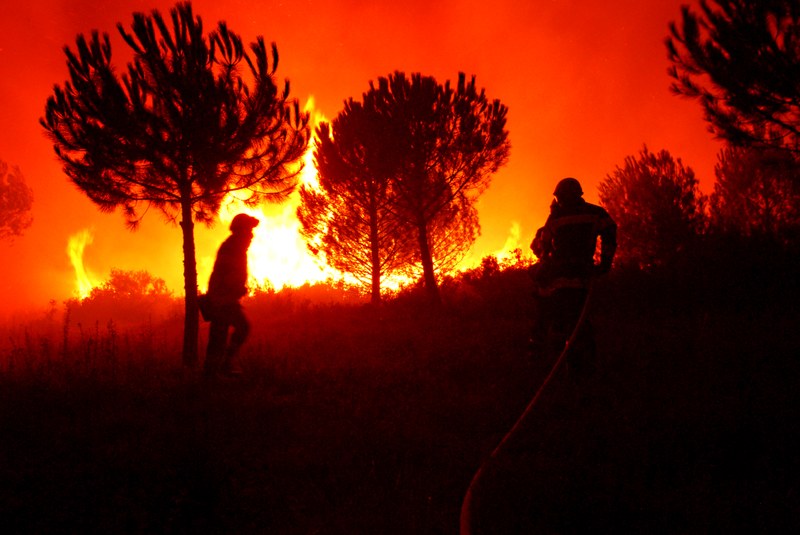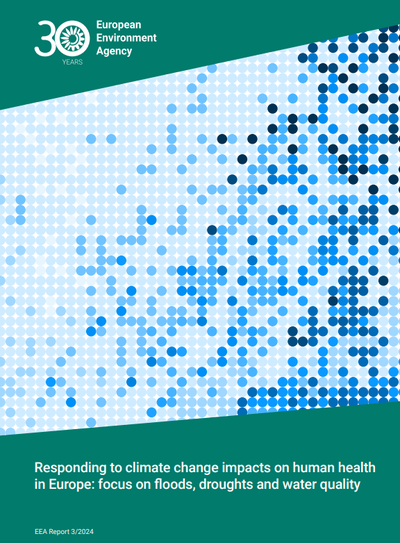All official European Union website addresses are in the europa.eu domain.
See all EU institutions and bodiesExtreme weather events pose an increased risk to nature, buildings, infrastructure, and human health. These events, expected to increase in frequency and intensity because of climate change, are already causing substantial damage and loss. We must adapt and prepare for life in a changing climate.
The summer of 2024 was the hottest on record for Europe and globally. Over 370.000 hectars of forest have been destroyed by wildfires in the first nine months of 2024. Around two million people across Central Europe were affected by the severe flooding in September alone. Floods in Valencia, in October, killed 230 people and destroyed homes and businesses.
Over the past decades, Europe has been experiencing frequent and severe weather and climate-related natural hazards like droughts, forest fires, heatwaves, storms and heavy rain. Climate change will make these events even more intense and more frequent.
Extreme temperatures do not only impact the health of vulnerable groups but also cause sleep disturbance for everyone. Rivers and lakes are drying up, impacting all life dependent on them. Soils are also getting drier, increasing fire risks and reducing agricultural productivity.
Other parts of Europe are experiencing intense downpours, sometimes flooding buildings and damaging property and infrastructure within a matter of minutes. Coastal zones will be at risk of more frequent storm surges, also resulting in flooded buldings or agricultural lands. Wind speeds are reaching levels never seen Europe before, causing accidents and serious damages to property. Other parts are seeing severe cold spells.
These events are unfortunate reminders of the changing and volatile climate that Europe needs to adapt and prepare for, while taking action to drastically reduce carbon emissions in order to slow down and limit climate change.
Europe's changing climate and summer 2024
Heatwaves, floods, droughts and wildfires have become more common in Europe during summer months. August 2024 was the hottest August, summer 2024 was the hottest on record for Europe and globally.
In June 2024, the devastating floods in Germany caused several fatalities and significant economic damages. Catastrophic floods affected many countries in Central Europe in September, also causing fatalities and affecting millions of Europeans.
The season of possible droughts, forest fires, extreme rain and flooding is ahead of us. European Environment Agency offers key resources to better understand extreme summer weather in Europe.


Extreme weather: what to expect?
Weather-related hazards facing the EU in the coming decades can be groupes as follow:
- Hot and cold: Mean air temperature will rise steadily across Europe.
- Wet and dry: Changes in rainfall are expected to differ considerably throughout Europe, with heavy rain in the North, more extremes in Central Europe, and a greater risk of drought in the South
- Wind: Storm intensity is projected to increase across Europe, but changes in the frequency are projected to differ across regions.
- Snow and ice: Snowfall is projected to decrease in central and southern Europe, whereas mixed changes are anticipated for northern Europe.
- Coastal regions: Sea levels will rise in all areas except the northern Baltic Sea.
- Open ocean: Sea surface temperature is projected to increase in all European seas, with associated increases in marine heatwaves. Europe’s seas are also expected to become more acidic.
Heatwaves, droughts, other extreme weather events increasingly influencing adaptation policies
Climate health risks posed by floods, droughts and water quality
Climate change is worsening floods, droughts and is reducing water quality, posing an increasing threat to our health, according to an EEA report . Fast-tracking implementation and better coordination of efforts by governments, water authorities and healthcare providers are urgently needed to prevent and reduce health impacts.
Between 1980 and 2022, 5,582 flood-related deaths and 702 wildfire-related deaths were recorded across 32 European countries. Already today, one in eight Europeans lives in areas potentially prone to river floods and around 30% of people in southern Europe face permanent water stress. Climate change will further increase exposure of people to weather extremes with serious health consequences.

